The coastline changes shape over time through natural processes, with climate change, human activity and existing flood defences also having an effect. The shape of our coastlines is changing rapidly, putting many homes, businesses and coastal communities at risk of flooding and abandonment.
Coastlines naturally erode over time causing them to retreat inland, however, the rate of erosion is increasing due to climate change, which is leading to sea level rise and larger, more frequent storm surges. This all increases the risk of coastal flooding which affects coastal communities and infrastructure.
Coastal flood management is therefore needed to manage the risk of erosion and flooding. Coastal flood management techniques can include hard defences such as sea walls (hard engineering) and soft defences such as dune planting and managed realignment (soft engineering).
The coastline changes shape over time through natural processes, however, climate change, human activity and existing flood defences also have an effect too. The shape of our coastline is changing rapidly, putting many homes, businesses and coastal communities at risk of flooding and abandonment.
Longshore drift is the natural process by which sediment and material is moved along the coast at right angles by wave action. This shapes the coastline by removing material (erosion) and depositing it elsewhere (accretion).
The coastline can draw in many tourists and provide economic opportunities for the tourism industry. Seaside towns have been developed over many years to create shops, hotels, piers, and roads on land that was once intertidal. Human activity in these areas can damage the effectiveness of sand dunes.

Land reclaimed from the sea enables development closer to the coast. Sea walls put up to protect the reclaimed land slow coastal erosion and therefore influence the shape of the coast. On the other hand, managed realignment schemes set back flood defences further inland to create intertidal habitats in the form of mudflats and salt marshes. These coastal marshes help to dissipate wave energy and protect against coastal flooding and erosion.
Our climate is changing, and the Earth is heating up. As a result, the ice caps are melting and thermal expansion is causing sea levels to rise. Over time, higher sea levels may speed up erosion and inundate coastal land. Climate change is also affecting weather patterns, causing an increase in wet and stormy weather. Larger and more frequent storm surges can speed up the rate of coastal erosion and increase the risk of flooding.
Find out more about the impacts of climate change in our resource here.
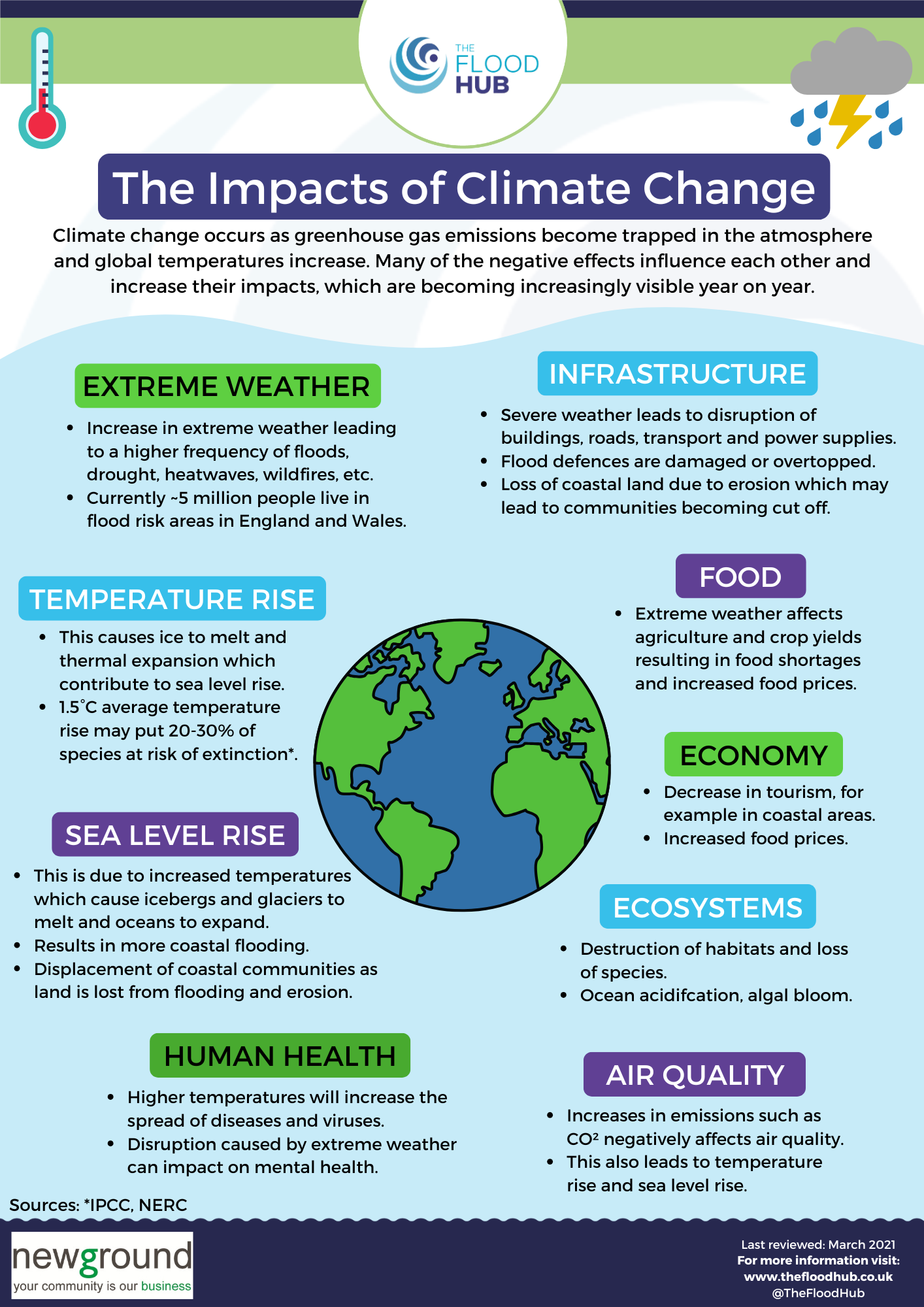
Some flood defence schemes that are put in place can influence the shape of the coastline by preventing the natural processes of coastal erosion and accretion, for example, sea walls. Schemes that involve the mimicking of natural methods to manage flood risk, such as beach nourishment, replaces material that has been lost by the sea or wind to try and replicate the natural changing of the coastline.
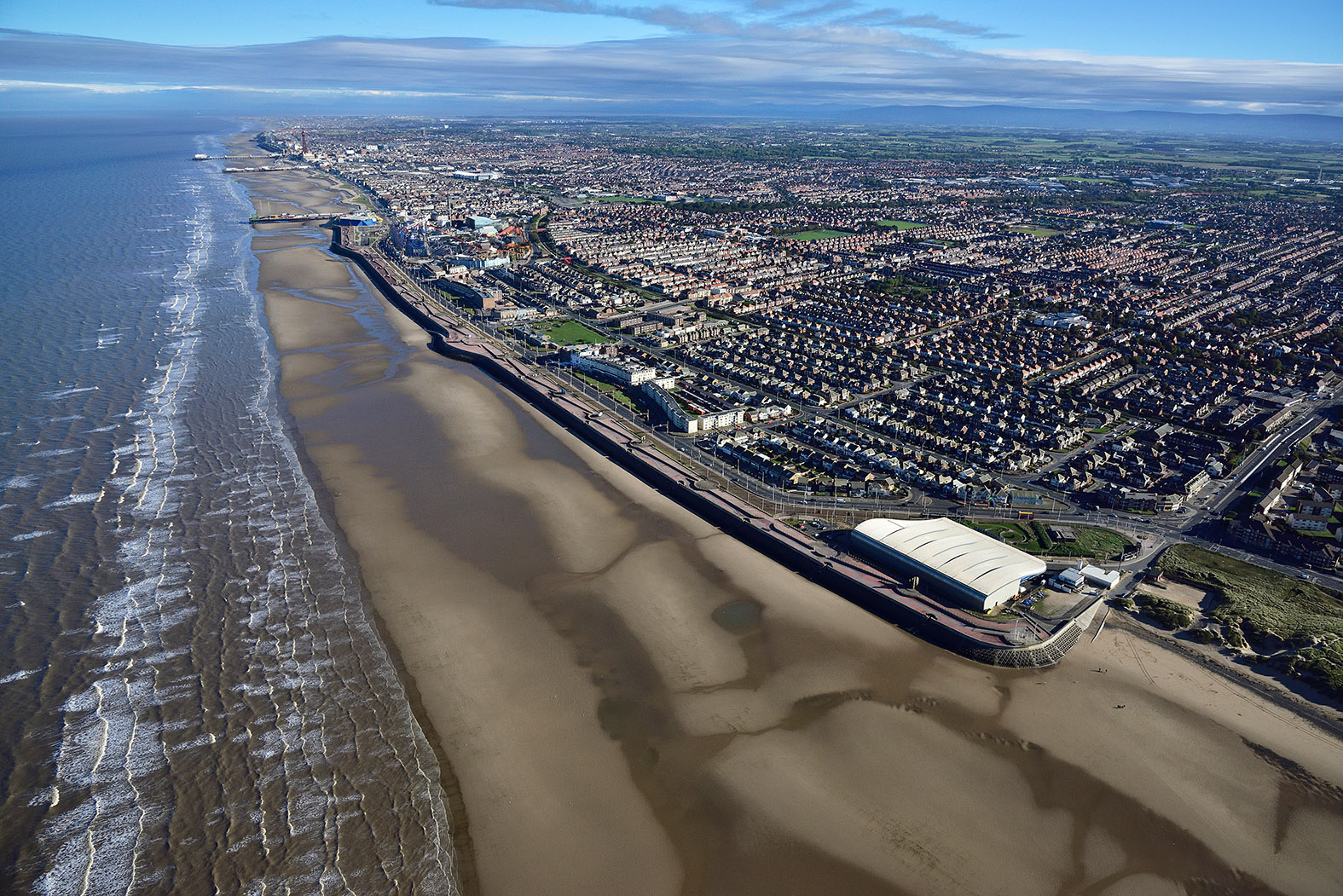
Shoreline Management Plans (SMPs) were introduced in 1995 when the government encouraged a more integrated approach to coastal defence. An SMP is a non-statutory policy document which sets the direction of strategic coastal defence policy and identifies the most sustainable approaches to managing the shoreline.
There are 22 SMPs in England and Wales which are managed by 7 coastal groups, and the North West SMP is managed by the North West and North Wales Coastal Group (NWNWCG).
Find out more about this group on our North West Coastline page here.
Explore the Environment Agency’s National Coastal Erosion Risk Map, offering detailed predictions of erosion rates and the corresponding Shoreline Management Plans for each area. Click here to visit the map.
England’s coastline is split up into different units and when identifying the most sustainable management policy for each, there are four policy options:
Maintaining or changing the current standard of protection. Work may be carried out in front of existing defences to improve the standard of protection, or behind existing defences to maintain the current coastal defence system.
Building new defences on the seaward side of the original defences. Use of this policy is limited to those policy units where significant land reclamation is considered.
Allowing the shoreline to move backwards or forwards, with management to control or limit movement. This includes reducing erosion or building new defences on the landward side of the original defences.
Where there is no planned investment in coastal defences or operations. This would be when it would not be feasible to protect the area even if management schemes are already in place.
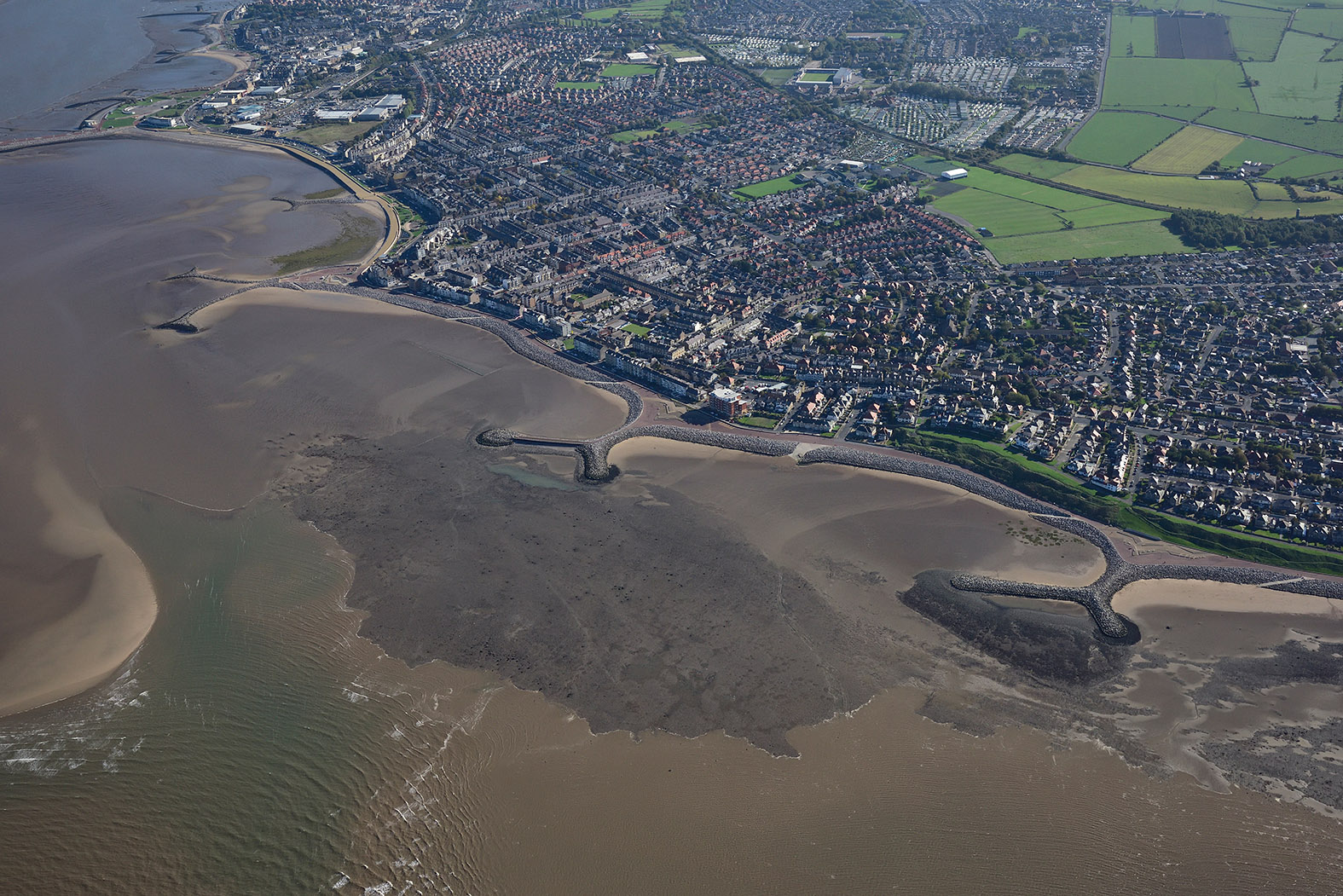
The coastline changes shape over time through natural processes, however, climate change, human activity and existing flood defences also have an effect too. The shape of our coastlines is changing rapidly, putting many homes, businesses and coastal communities at risk of flooding and abandonment.
Coastal communities will be subject to more coastal erosion and flooding due to more frequent storms and increasing sea levels. This can have a negative impact on the economy, as well as on the mental health of residents and business owners, as they may live in fear of heavy rain, storms and flooding. Erosion and flooding can also cause coastal areas and farmland to be destroyed and even to fall into the sea.
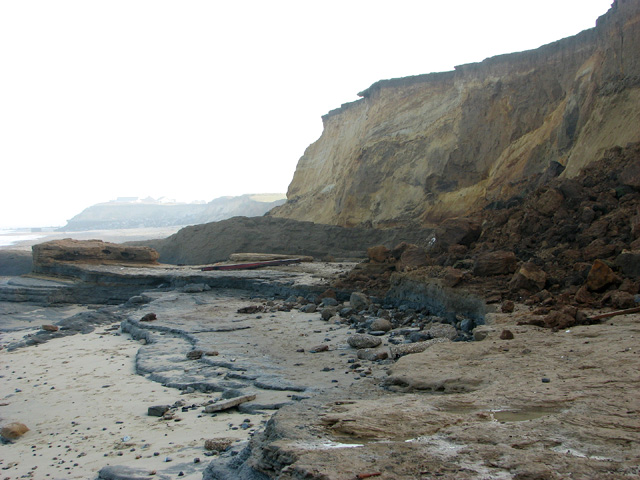
Storm Damage at Happisburgh – cc-by-sa/2.0 – © Evelyn Simak – geograph.org.uk/p/3774304
Due to increases in coastal flooding, there is a greater risk of some coastal communities being inundated by the sea and it may be inevitable that residents and businesses must relocate to a new area. This can cause a lot of stress due to an uncertain future. This is the case in Fairbourne, Wales, where it is no longer economically viable to protect the village from coastal flooding and erosion. Eventually, the land will be returned to the sea and residents will be moved inland from 2045.
Mudflats and salt marshes which form on intertidal land produce various habitats and host many species. By building on this land, habitats and whole marine ecosystems can be lost.
Coastal areas which are frequently flooded and show evidence of significant erosion may be more likely to deter investment and less likely to attract new businesses into the area. Due to the unpredictability of climate change, coastal flooding and erosion, people and business owners may be less likely to relocate to an ‘at risk’ area, with fear of flooding, abandonment, and an uncertain future. Changes to the shape of the coastline may mean that recreational spaces and facilities are lost.
To adapt to the effects of climate change, new developments could incorporate property flood resilience and sustainable drainage systems. Using managed realignment to relocate defences, development and infrastructure further inland leaves space for intertidal land to be naturally flooded and reclaimed by the sea, reducing risk to properties.
Risk Management Authorities including the Environment Agency may implement flood risk management schemes in coastal areas to reduce erosion and the risk of flooding to communities and infrastructure. There are many different approaches that can be taken which are outlined in the Coastal Management Techniques section below.
Encouraging soft engineering such as sand dune regeneration and salt marsh restoration can provide a natural defence against coastal flooding and erosion. These methods can reduce wave energy before they reach the shore, reducing both erosion and flooding.
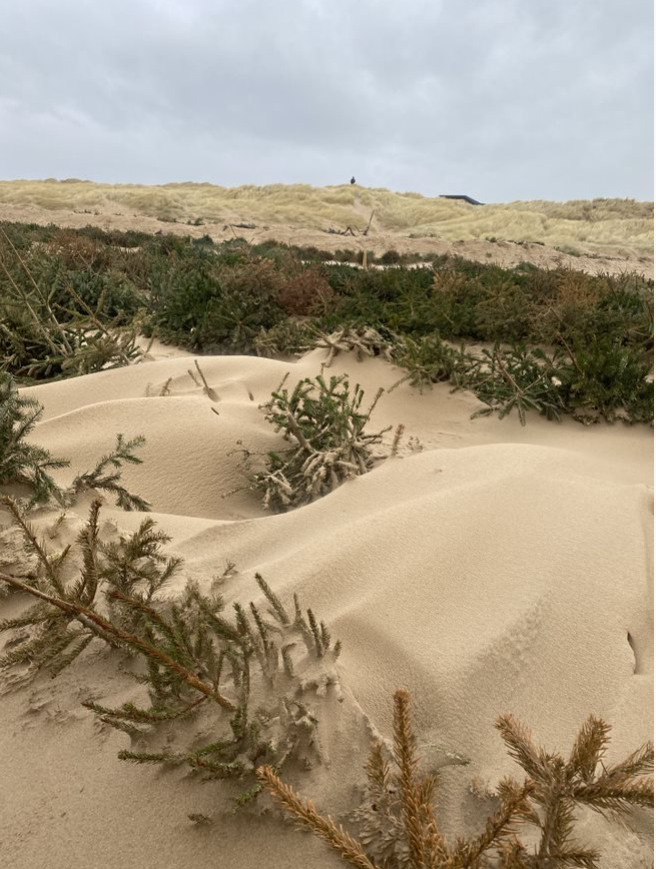
Over time, existing flood defence structures such as sea walls become damaged due to wave power and erosion, and rising sea levels may make them ineffective. Repairing existing structures and putting new schemes in place where necessary enables essential coastal development to remain protected. Alternatively, old, damaged structures can be removed to let the land be reclaimed.
Resilience plans enable communities to be more prepared, respond efficiently and able to recover more quickly from disruption. Community resilience plans can be extremely useful during a flood event for highlighting the location of emergency evacuation centres, people who may be vulnerable and the contact details of residents with useful skills.
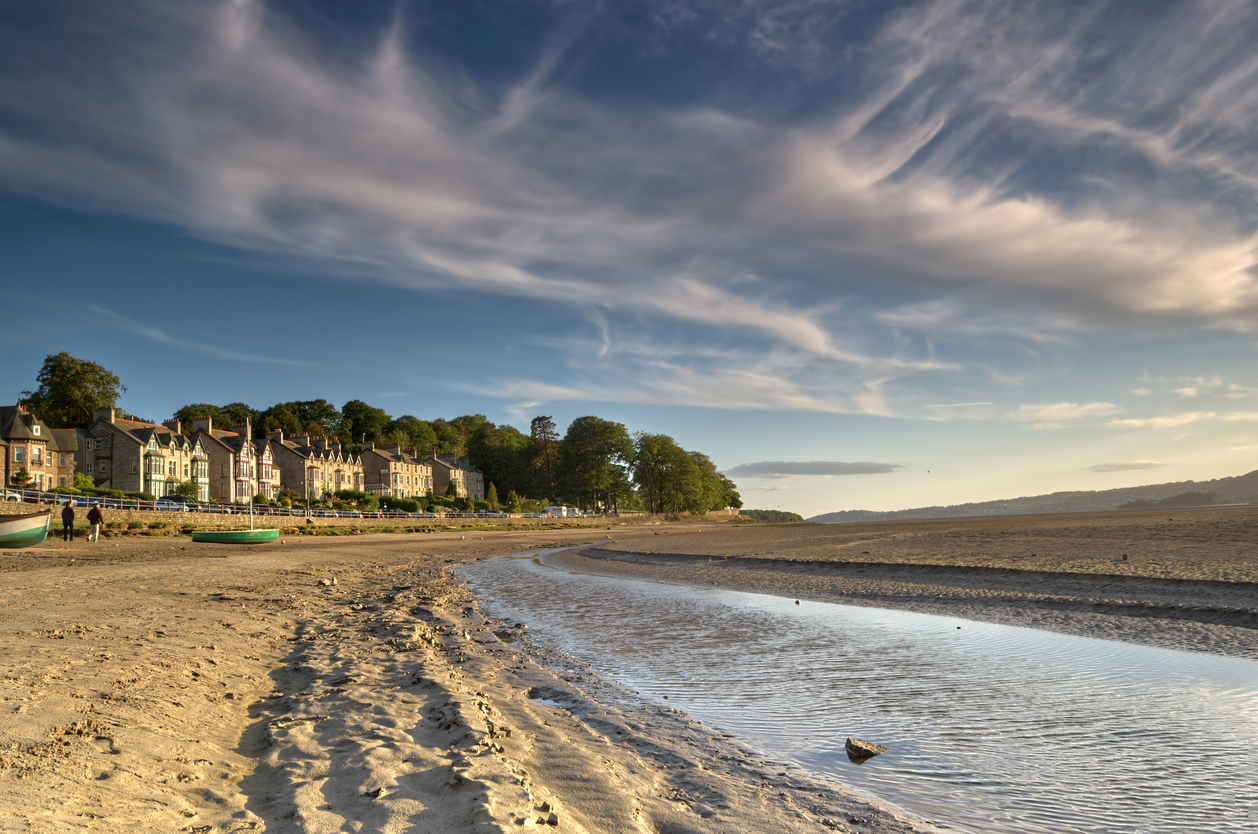
By individuals and the government actively taking steps now to reduce our carbon footprints, we can reduce the impact we have on the environment. Collectively, we could slow down the impacts of climate change, such as rising sea levels and consequential coastal flooding and erosion. Individuals can also plan for the risk of coastal flooding, implementing property flood resilience to their properties, and creating flood plans to ensure they can respond efficiently if flooding occurs.
For more information on the changing coastline, it’s impacts and how we can adapt, download our booklet by clicking here.
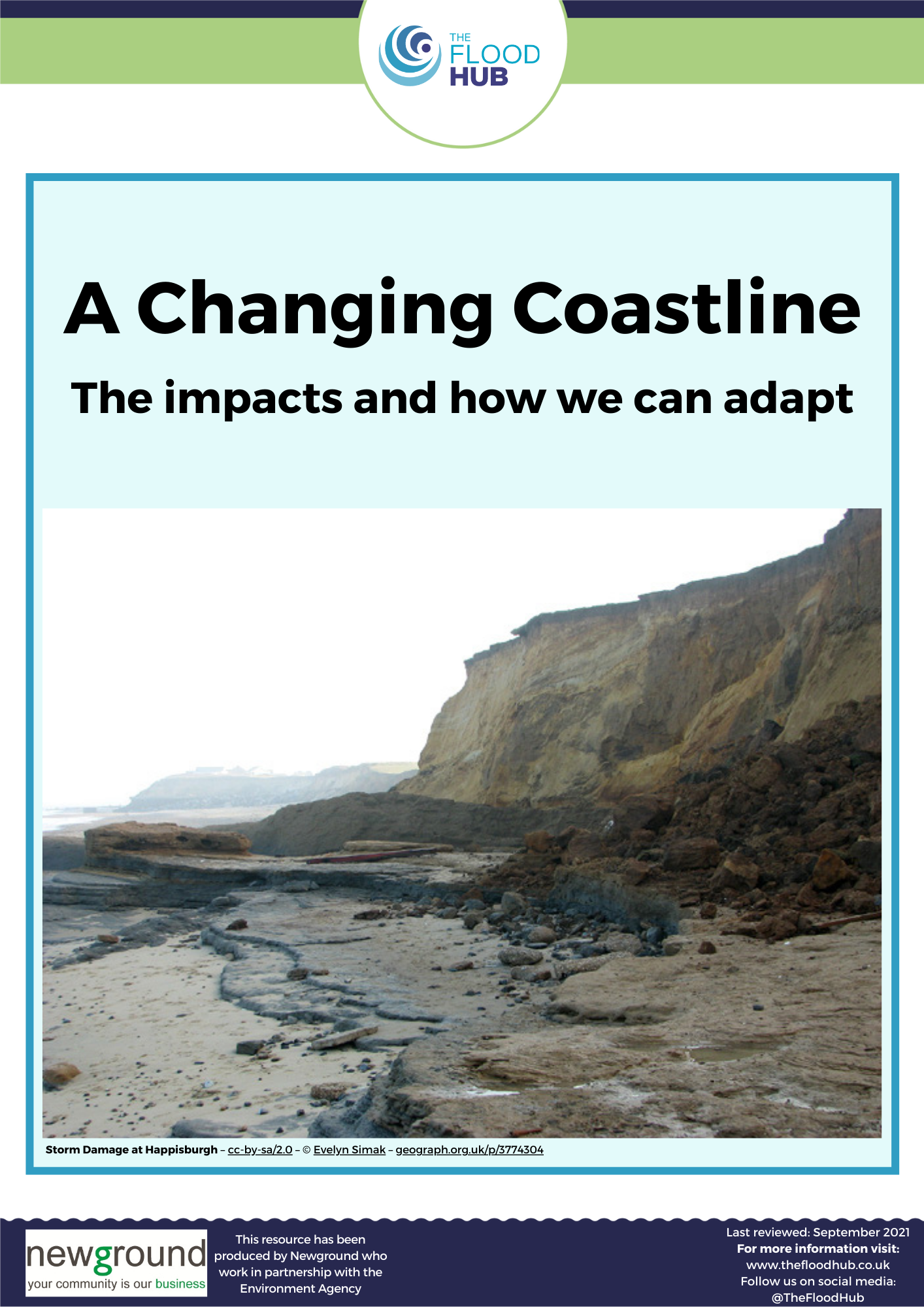
Hard engineered coastal defences generally involve the placement of artificial structures which are used to stop or slow the natural processes of erosion, flooding and sea level rise. They are visible solutions which help to reassure coastal communities. However, they are expensive to construct and require expensive ongoing maintenance programmes.
The methods used to manage the effects of coastal erosion and flooding have typically involved building defences which deflect the power of waves and high tides. Hard engineered coastal protection can protect seaside towns, cities and popular tourist destinations but they are constantly subjected to impacts from the sea and are costly to install and monitor. Rising sea levels, along with the high cost of maintaining sea defences, call for more cost effective and sustainable methods of coastal protection.
Here are some forms of hard engineering that are used to reduce coastal flooding and erosion risk:
Revetments are sloping structures built on embankments or shorelines, along the base of cliffs, or in front of sea walls to absorb and dissipate the energy of waves to reduce coastal erosion. They can be made of concrete, stone, asphalt or wood, and the height of the revetments is designed to stop waves overtopping the defence. Revetments can be both permeable and impermeable. Permeable revetments are generally built from rock or concrete armour, gabions, and timber. They reduce the erosive power of waves by dissipating their energy as they reach the shore. Impermeable revetments are continuous sloping defences made of stone or concrete which act as a fixed line of defence and are designed to act as a barrier against hightides and storm surges.
For more information on revetments, click here to download our resource.
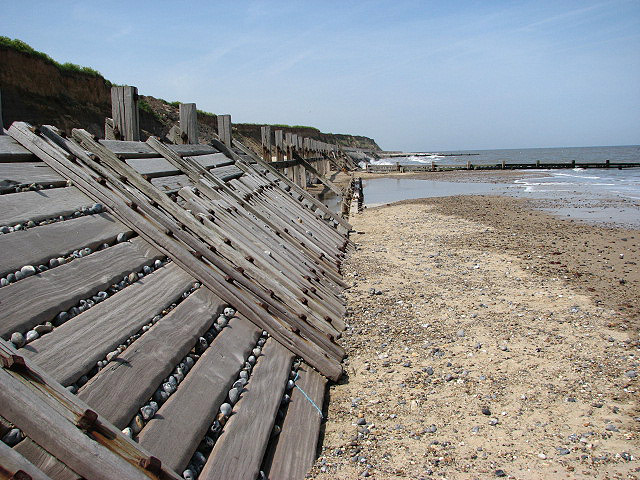
Wooden Revetment – cc-by-sa/2.0 – © Evelyn Simak – geograph.org.uk/p/799647
Groynes are low-lying wood or concrete structures situated out to sea from the shore. They are designed to dissipate wave energy, trap sediment and restrict the transfer of sediment away from the beach through longshore drift. Longshore drift is caused when prevailing winds blow waves across the shore at an angle which carries sediment along the beach. Groynes prevent this process and therefore slow erosion at the shore. They can be permeable or impermeable, with permeable groynes allowing some sediment to pass through and some longshore drift to take place, and impermeable groynes being solid and preventing the transfer of any sediment.
For more information about groynes, click here to download our resource.
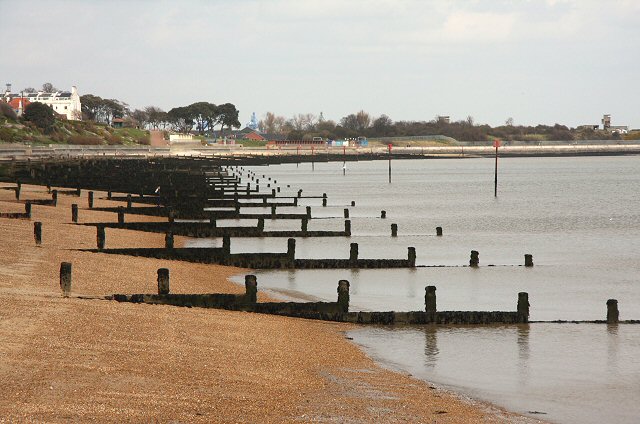
Dovercourt groynes – cc-by-sa/2.0 – © Bob Jones – geograph.org.uk/p/748828
Breakwaters are offshore sloped or vertical concrete walls designed to dissipate the power of waves further out from the shore, so that once they reach the shore the wave energy and consequential erosion is reduced. This means that they can also create calmer waters for ships. Breakwaters can be made from rock, stone or concrete and some run parallel to the shoreline.
For more information about breakwaters, please click here to download our resource.
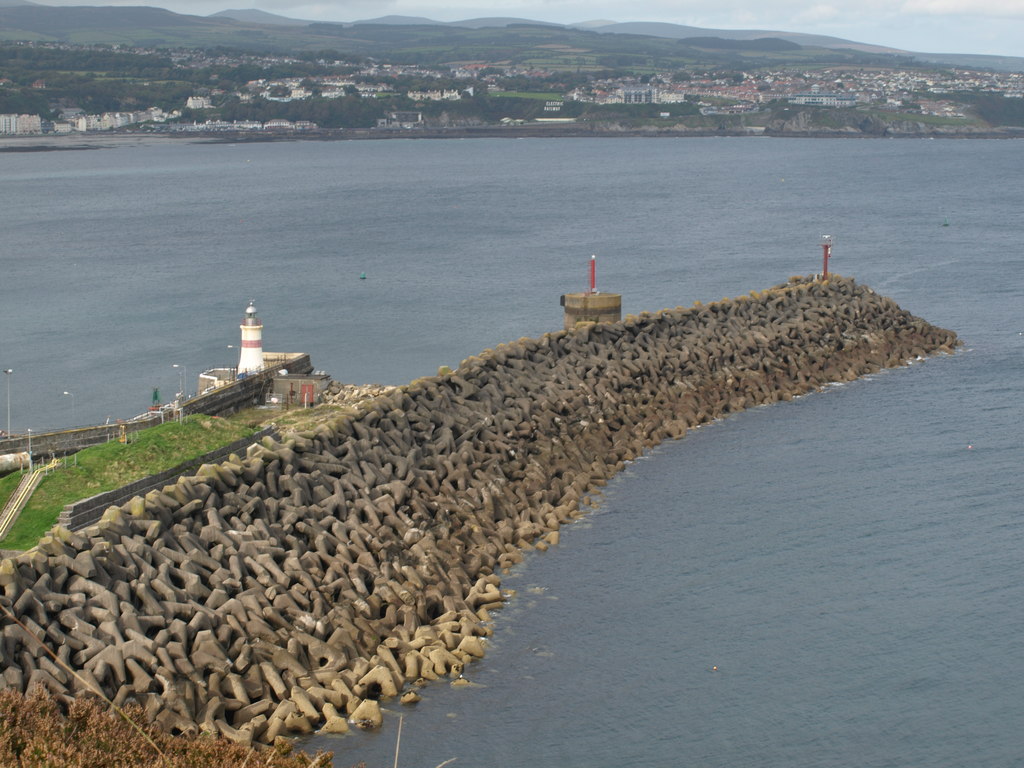
Douglas breakwater – cc-by-sa/2.0 – © Andrew Abbott – geograph.org.uk/p/3160449
Sea walls are solid barriers made from concrete, masonry or gabions and are designed to prevent high tides and storm surges reaching inland and causing flooding. They can have a variety of profiles such as sloped, stepped or vertical, and are designed to withstand the force of waves for around 30 to 50 years. Many sea walls have been constructed across the UK to reduce the risk of flooding, and they require frequent maintenance so that they don’t fail.
For more information about sea walls, please click here to download our resource.

Soft engineering techniques involve working with nature to manage the coastline. Natural flood management (NFM) is used to manage coastal flood risk and erosion using natural methods. This can be done by improving natural buffers which help to absorb tidal and wave energy through the replacement of eroded material, replanting beach plants which trap sand, and breaching or removing existing management schemes to allow the shoreline to roll back naturally. Soft engineering can be used on the coast, in intertidal areas or both. Some schemes, such as those where eroded material is replaced, will require ongoing maintenance programmes as they may have a relatively short lifespan.
Here are some forms of soft engineering that are used to reduce coastal flooding and erosion risk:
Managed realignment is the planned breach or relocation of sea defences further inland which creates sustainable, environmentally beneficial intertidal habitat in the form of mud flats and saltmarshes. These coastal marshes help to dissipate wave energy, protect against erosion, act as carbon sinks, and provide a rich environment for wildlife. Managed realignment is also a long-term alternative to building higher sea walls or larger defences as sea levels rise in the future.
For more information about managed realignment, click here to download our resource.
Sand dunes are natural barriers which protect coastal towns and villages from high tides and flooding. Dunes form above the level of high tide when dune plants trap wind-blown sand, which accumulates and increases the height and width of the dunes. They are constantly changing due to varying wind speed and direction, rising sea levels, storm surges and recreational visitor activity. To slow the erosion of these natural coastal flood defences, there are techniques which can help to stabilise the areas where there has been dune loss:
Dune Fencing – Built seaward of the dunes, fencing prevents trampling from recreational beach users allowing sand to settle and increase dune size. This method can be used in combination with dune planting to encourage seaward dune growth.
Dune Planting – Plants such as Lyme or Marram Grass help to stabilise the dunes by trapping sand, as their root systems are extensive and mat together. Established plants also reduce wind speed over the dunes, slowing erosion. Plants may be self-sustaining after an initial period of establishment.
Dune Thatching – Covering the face of dunes with bundles of straw, branches, and old Christmas trees increases sand accretion and protects dune vegetation. A benefit of this technique is that there is no establishment time required.
For more information on dune regeneration, click here to download our resource.
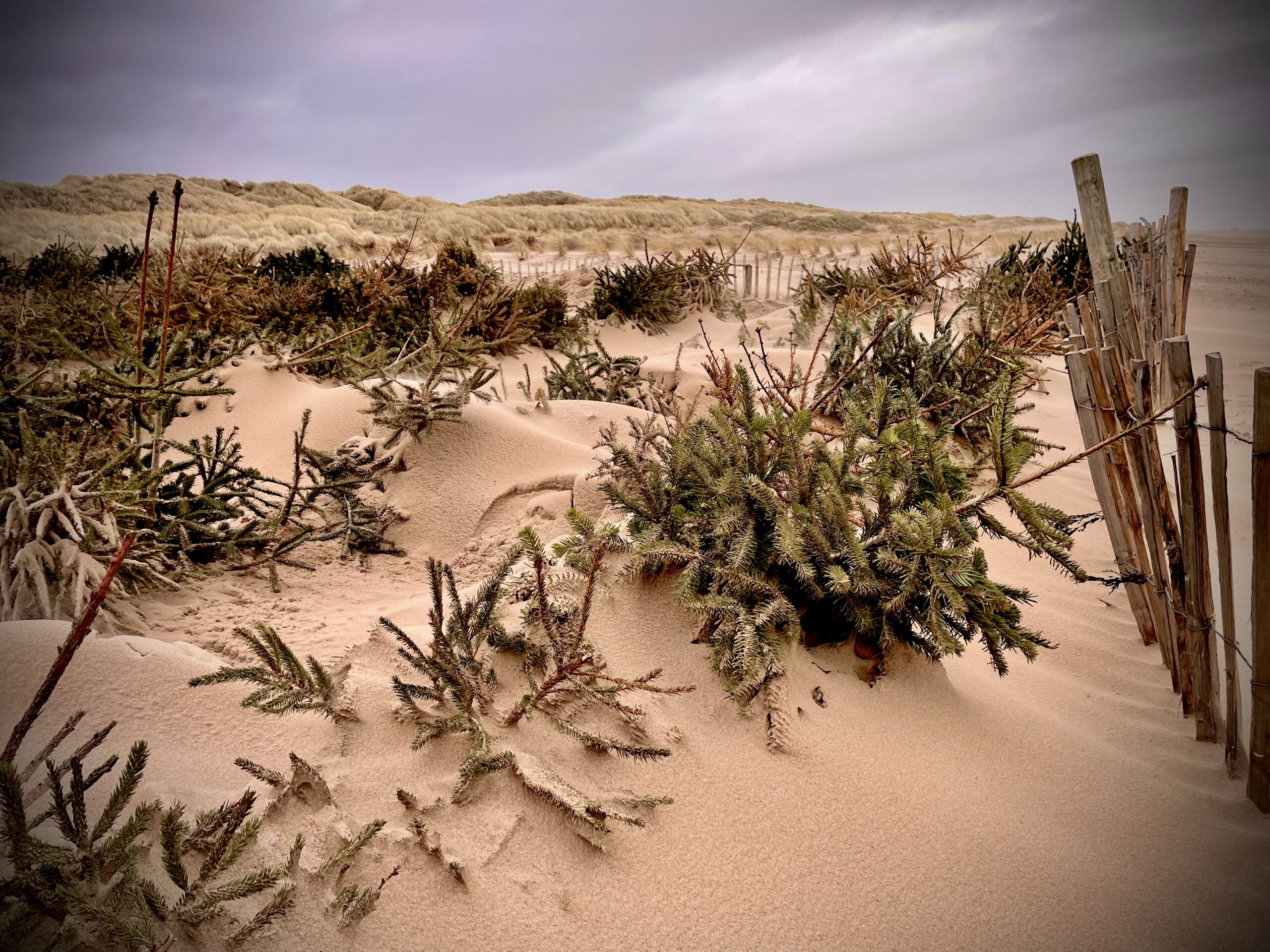
Beach nourishment is the replacement of material which has been lost from beaches by sea or wind erosion. As opposed to building large hard engineered defences, this will keep the beach looking natural whilst providing protection to the local community from flooding. Long term management plans are required as the replenished material may erode in a relatively short space of time, meaning the process needs to be repeated periodically at considerable cost.
Dredging – Material is dredged from the seabed and pumped to shore along with large amounts of water. As the dredged material is pumped onto the beach the water drains away leaving the sand behind.
Reprofiling – The beach is reshaped by moving material by machine from areas of accretion to areas where erosion has taken place.
Transporting – Dredged material from other areas, or gravel/sand that has been quarried on shore, can be transported to site by truck to replace eroded material.
For more information on beach nourishment, click here to download our resource.
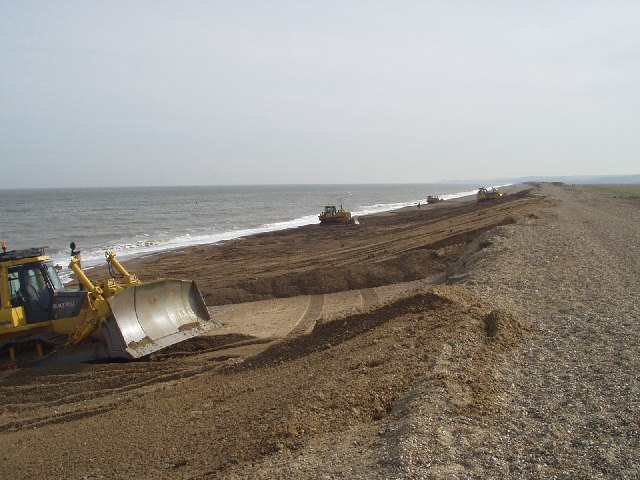
The Beach at Cley, Norfolk – cc-by-sa/2.0 – © Peter Home – geograph.org.uk/p/24206
Cliffs can fail due to several factors, such as composition or rock type, geological structure (faults, joints, etc.), climate and wave energy. There are soft and loose cliffs made up of silt, clay, marl or chalk etc which are more prone to erosion and landslides, and hard cliffs made up of limestone or granite etc. Erosion of cliffs in coastal areas results in the retreat of the coastline as the amount of material eroded exceeds that which is deposited. Stabilisation techniques are used to limit erosion and the potential for landslides, collapse and falling rocks.
One technique is to reduce the slope of the cliff and revegetate the cliff top. Planting vegetation helps to strengthen the cliff structure and increase cohesion, which will help to keep the cliff in place, prevent cliff material from slumping and prevent landslides.
Another method can be to drain any excess water from the cliff. This prevents water from flowing along planes of weakness which can lead to rock and sediment sliding to the base of the cliff. It will also limit the likelihood of liquefaction which can cause mudflows.
For more information about cliff stabilisation, click here to download our resource.
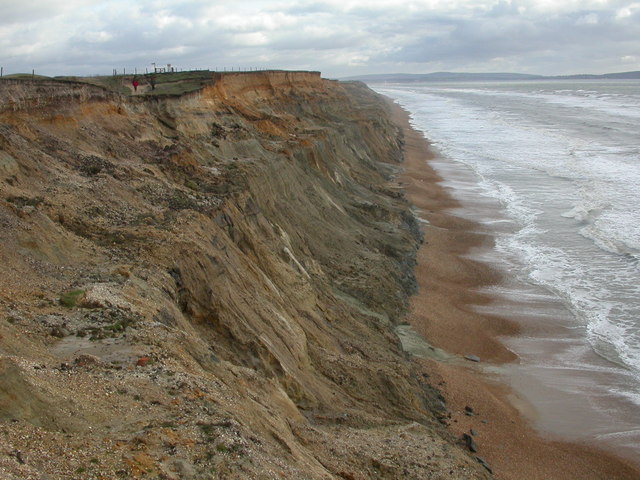
Hordle Cliff, coastal erosion – cc-by-sa/2.0 – © Mike Faherty – geograph.org.uk/p/1634767
For information on all of these techniques, click here to view our ‘Coastal Flooding Toolkit’ and click here to view our ‘Coastal Natural Flood Management Toolkit’.
Hover over this graphic to explore the multiple benefits of coastal management. Download a labelled version of this graphic here.
Image: The Flood Hub
Coastal management reduces the risk of flooding by slowing erosion, dissipating wave energy and creating defences to hold back waves. With climate change and rising sea levels, this is important to protect from more frequent and intense storms.
Coastal schemes can stop or slow erosion, protecting homes and businesses which may be at risk. Critical sites such as power stations and gas terminals that may need to be close to the sea also benefit from long term management plans.
Coastal schemes can allow access to coastal areas for recreation which provides benefits to health and wellbeing. For example, the National Cycle Route 62 covers 12 miles between Blackpool to Fleetwood, making it the UK’s longest seafront cycle route.
Intertidal habitats at the coastline, such as salt marshes, are important carbon sinks. Environmental change and human land use mean they are on the decline, but better coastal management and managed realignment can help them increase.
Coastal schemes protect hundreds of thousands of homes and businesses and the subsequent losses associated with flooding and erosion. Coastlines are popular destinations for day trippers and holiday makers which boosts the economy.
Coastal schemes using a natural approach, such as dune regeneration, salt marsh restoration and managed retreat, can provide rich habitats for a range of wildlife and plants.
Visit the Knowledge Hub here and click on the ‘coastal’ category to find numerous resources on coastal flooding and related topics.
There are also specially made coastal toolkits:
How the Weather Affects Beach Changes – Visit Fylde Coast
Coasts for Kids – a series of YouTube videos which provides a collaborative experience between children and their parents, coastal scientists, community artists, teachers, animators and coastal managers. The project was developed by Sefton Council, Southport Eco Centre and Edge Hill University.
Environment Agency – National Flood and Coastal Erosion Risk Management Strategy for England
KS2 Flooding Education Package – 10 lessons on flooding and flood risk management, including a lesson on coastal flooding and erosion.
KS2 Climate Change Education Package – 4 Lessons all about the climate, weather and climate change.
KS3 Weather and Climate – An 8 lesson education package for KS3 students, exploring weather, climate, influencing factors and climate change.
Our Future Coast – The ‘Our Future Coast’ project is testing ways to make natural coastal habitats, like salt marsh and sand dunes, better at protecting us in the face of climate change and sea level rise. Explore the page by clicking here, to learn how the project is working with nature and communities on the NW Coast. The essence of their approach is designing together with communities putting them at the heart of Our Future Coast.